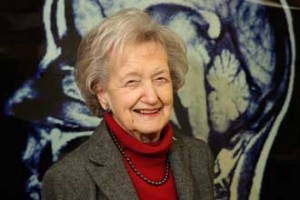
By Laurie Devine
Few had heard the name Henry Molaison before news of his death broke on the front page of the New York Times late last week. He was known as H.M., or simply Henry, by students of cognitive psychology as a participant in hundreds of neurological studies.In 1953, following surgery on the medial temporal region of his brain for a seizure disorder, H.M. lost the ability to form any new long-term memory. For the next 55 years, everything he did each day was new to him. For three decades Brenda Milner, a neuropsychologist with the Montreal Neurological Institute, worked with H.M. yet each time she met with him she had to reintroduce herself. With his collaboration on a variety of memory tests, she observed that he was unable to remember from one day to the next. Yet, some learned tasks, though completely forgotten, became easier for H.M. to do over time. She concluded that there were at least two systems in the brain for creating new memories, a finding that had enormous implications in neuroscience, and revolutionized the understanding of the organization of human memory.
“The study of H.M. by Brenda Milner stands as one of the great milestones in the history of modern neuroscience,” Eric Kandel, a neuroscientist at Columbia University told The Times. “It opened the way for the study of the two memory systems in the brain, explicit and implicit, and provided the basis for everything that came later – the study of human memory and its disorders.
Henry Gustav Molaison died at the age of 82 in Windsor Locks, Connecticut. He lived an anonymous life yet provided a memorable contribution to science.
